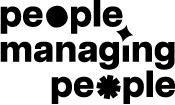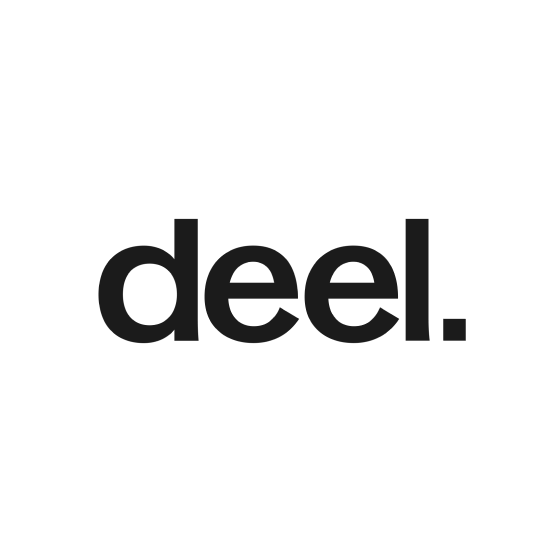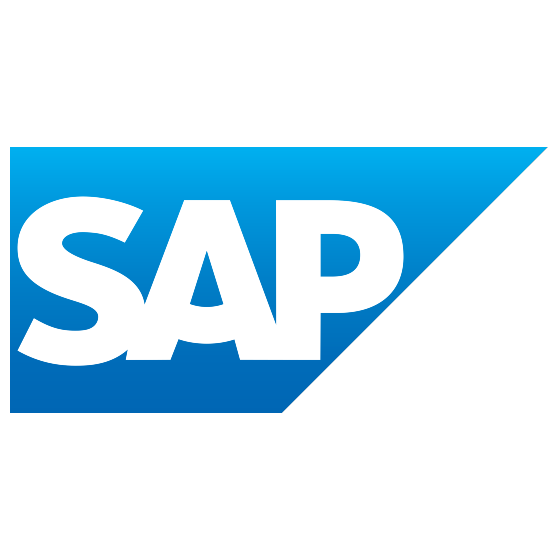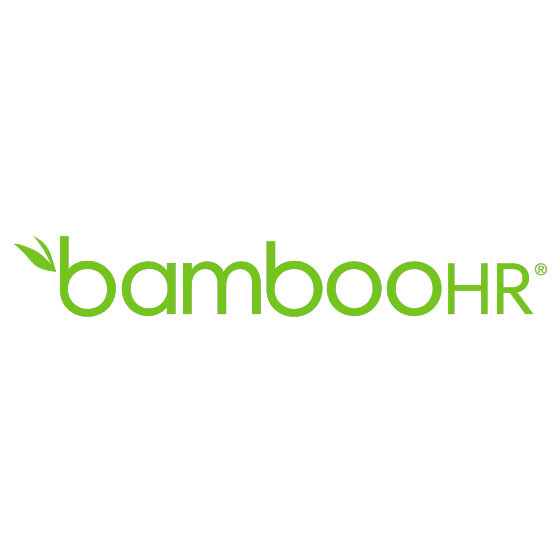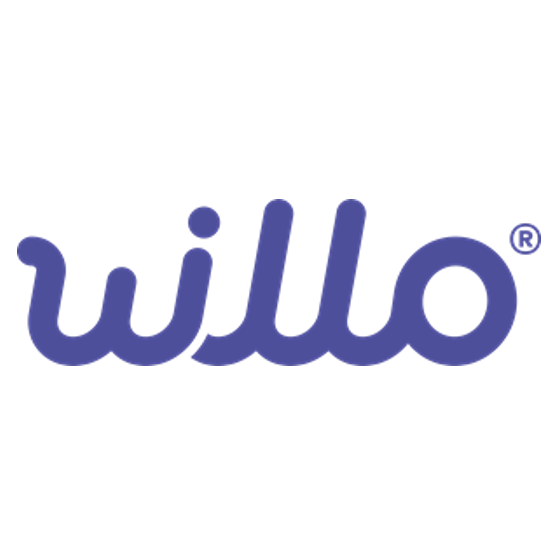Best HR Service Delivery Software Shortlist
Here’s my pick of the 10 best software from the 22 tools reviewed.
Get free help from our HR software advisors to find your match.
HR service delivery software streamlines HR processes by centralizing tasks, automating services, and improving access to information for both employees and HR teams. Essentially, these tools address inefficiencies, enhance the employee experience, and reduce reliance on manual workflows.
With countless options available, finding the right fit can feel overwhelming—but this curated list will simplify your search by highlighting the top solutions to meet your needs.
Why Trust Our Software Reviews
We’ve been testing and reviewing HR software since 2019. As HR experts, we know how critical and difficult it is to make the right decision when selecting software.
We invest in deep research to help our audience make better software purchasing decisions. We’ve tested more than 2,000 tools for different HR management use cases and written over 1,000 comprehensive software reviews. Learn how we stay transparent, and take a look at our software review methodology.
Best HR Service Delivery Software: Pricing Comparison Chart
This comparison chart summarizes pricing details for my top HR service delivery software selections to help you find the best software for your budget and business needs.
| Tool | Best For | Trial Info | Price | ||
|---|---|---|---|---|---|
| 1 | Best for managing global worker lifecycle | Free trial + demo available | From $29/month | Website | |
| 2 | Best for enterprise automation | Free demo available | Pricing upon request | Website | |
| 3 | Best for scalable all-in-one HR Solutions | Free trial + free demo available | Pricing upon request | Website | |
| 4 | Best for customizable and user-friendly HR Management | Not available | Pricing upon request | Website | |
| 5 | Best for AI-powered HR solutions | Not available | Pricing upon request | Website | |
| 6 | Best for AI-driven workplace culture | Free demo available | Pricing upon request | Website | |
| 7 | Best for mobile AI assistance in HR | Not available | Pricing upon request | Website | |
| 8 | Best for smooth HR service automation | Free trial available | From $30/month | Website | |
| 9 | Best for SharePoint-based HR management | Not available | Pricing upon request | Website | |
| 10 | Best for employee self-service | 7-day free trial | From $6.19/user/month (billed annually) | Website |
-

Rippling
Visit WebsiteThis is an aggregated rating for this tool including ratings from Crozdesk users and ratings from other sites.4.8 -

Willo
Visit WebsiteThis is an aggregated rating for this tool including ratings from Crozdesk users and ratings from other sites.4.8 -

Boon
Visit WebsiteThis is an aggregated rating for this tool including ratings from Crozdesk users and ratings from other sites.4.7
Best HR Service Delivery Software Reviews
Here is my detailed analysis of the top HR service delivery software, highlighting their strengths and limitations. Each review provides in-depth insights into their features and the best use cases for each tool.
Deel is a comprehensive platform designed to manage payroll, HR, and compliance for global teams. It enables businesses to hire employees and contractors around the world quickly and efficiently, automating various processes such as payroll and onboarding.
Why I Picked Deel: I like its ability to manage the entire worker lifecycle in over 150 countries, ensuring compliance with local labor laws. This is particularly beneficial for companies with a global workforce, as it simplifies the complexities of international HR management. Deel's platform includes features such as self-serve onboarding, automated HR administration, time-off management, expense management, and document storage. It also offers in-house EOR services, employee relocation, and visa assistance.
Standout Features & Integrations
Features include payroll automation, localized benefits administration, contract creation, global equipment shipping, an LMS, performance management features, and IT asset management.
Integrations include Slack, Google Workspace, Microsoft Teams, BambooHR, Greenhouse, SAP SuccessFactors, Okta, and Azure Active Directory.
Pros and cons
Pros:
- Additional features like learning, engagement, and IT asset management
- Easy payments for employees and contractors
- Emphasis on global compliance
Cons:
- May be challenging to learn for new users
- Could offer more customization options
ServiceNow is a HR service delivery platform designed to automate and organize HR processes. It offers a single system of action, optimizing processes from hire to retirement through to employee self-service, digitization, and AI.
Why I Picked ServiceNow: I chose ServiceNow for its ability to centralize and automate HR processes on a single platform, which is crucial for large enterprises. Its features that enable organizations to digitize HR workflows, increasing efficiency and reducing costs make it a solid choice for an HR service delivery software tool.
Standout Features & Integrations
Features include Now Assist for HRSD with generative AI, an employee hub for a unified service delivery portal, employee journey management, case and knowledge management, a HR Agent Workspace tool, mobile access, performance analytics, predictive intelligence, and process mining.
Integrations include Microsoft Azure, SAP, Oracle, Salesforce, Workday, Slack, Microsoft Teams, Jira, AWS, and Google Cloud.
Pros and cons
Pros:
- Detailed HR workflow automation
- Unified service delivery portal
- AI-driven self-service
Cons:
- May be slightly complex for small businesses
- Custom quote required
SAP SuccessFactors provides automated workflows, integrated knowledge bases, and efficient case management systems. It features customizable dashboards, mobile access, in-depth reporting, detailed employee profile management, and integrated payroll.
Why I Picked SAP SuccessFactors: I chose SAP SuccessFactors for its relatively easy scalability and detailed HR functionalities. It stands out with its integrated suite of tools that support end-to-end HR processes, including workforce analytics, performance management, and employee central services. SAP SuccessFactors offers extensive flexibility and integration capabilities, making it suitable for businesses of all sizes and complexities. I believe SAP SuccessFactors is ideal for scalable all-in-one HR solutions due to its ability to adapt and grow with any organization's needs.
Standout Features & Integrations
Features include automated workflows, integrated knowledge bases, an efficient case management system, personalized dashboards, mobile accessibility, detailed reporting capabilities, employee profile management, time and attendance tracking, smooth onboarding and offboarding processes, and compliance management tools.
Integrations include Microsoft 365, Google Workspace, Slack, ADP, Kronos, Workday, IBM Kenexa, SuccessFactors Learning, SAP S/4HANA, and SAP Concur.
Pros and cons
Pros:
- Insightful service delivery analytics
- Scalable for any company size
- Extensive HR management suite
Cons:
- Transaction-based pricing complexity
- Steep learning curve
Sympa offers customizable workflows and processes to meet specific organizational needs. It covers the entire employee lifecycle, from recruitment to development, with a user-friendly interface and robust management tools.
Why I Picked Sympa:
I chose Sympa for its customizable and user-friendly HR management capabilities. It stands out for tailoring workflows and processes to specific organizational needs. Sympa allows organizations to adjust HR processes to match their unique requirements, covering everything from recruitment to employee development. This makes it valuable for companies seeking a personalized approach to HR management, ensuring alignment with their goals and culture. I believe Sympa is best for customizable and user-friendly HR management due to its adaptability and ease of use.
Standout Features & Integrations
Features include core HR, employee onboarding and offboarding, learning and development, absence management, time registration, compensation and salary review, and reporting.
Integrations include Workday, SAP SuccessFactors, Oracle HCM, Microsoft Dynamics 365, ADP, Visma, LinkedIn, Google Workspace, and Docusign.
Pros and cons
Pros:
- Flexible customization options
- User-friendly interface
- Personalized HR management
Cons:
- Limited out-of-the-box integrations
- Potential setup complexity
Neocase is designed to enhance efficiency and accuracy in HR operations. It automates repetitive tasks, reducing manual effort and streamlining HR services.
Why I Picked Neocase: I chose Neocase for its AI-powered HR solutions that excel in automating HR service delivery. The tool's AI capabilities automate repetitive tasks, reducing manual effort and increasing efficiency. Its wide array of HR functionalities include advanced case management, automated workflows, and a self-service portal for employees to handle their HR queries independently.
Standout Features & Integrations
Features include AI-driven case management, which automates issue resolution and improves response times, and a self-service portal that empowers employees to handle HR tasks independently. It also offers detailed analytics and reporting tools for data-driven decision-making.
Integrations include SAP SuccessFactors, Workday, Oracle HCM, Microsoft Dynamics 365, ADP, Salesforce, ServiceNow, UKG, Cornerstone OnDemand, and BambooHR.
Pros and cons
Pros:
- Detailed analytics and reporting tools
- Business process automation
- Advanced case management
Cons:
- Pricing not transparent
- Slight learning curve
UKG provides HR solutions that utilize AI to cultivate a positive workplace culture. It excels in using artificial intelligence to improve employee experiences and HR operations.
Why I Picked UKG: I selected UKG for its exceptional AI capabilities that set it apart from other HR software. Its emphasis on AI to enhance workplace culture is compelling. I believe UKG is best for an AI-driven workplace culture due to its use of AI to offer insights into employee feelings, refine scheduling, and tailor the employee journey, which is essential for a vibrant work environment.
Standout Features & Integrations
Features include AI-powered schedule optimization, predictive analytics for employee retention, analysis of employee feedback, and customized recommendations for staff and management. These features simplify HR tasks, build trust, and improve the employee experience
Integrations include Workday, SAP SuccessFactors, Oracle HCM Cloud, ADP, Microsoft Dynamics 365, Salesforce, Tableau, Slack, Google Workspace, and ServiceNow.
Pros and cons
Pros:
- Employee experience focus
- Extensive HR solutions
- AI for workplace insights
Cons:
- Limited customization options
- Complex implementation process
Applaud offers a user-friendly HR service delivery platform focused on enhancing the employee experience through personalized, mobile-first solutions. Its features include customizable workflows, employee self-service, and real-time analytics, making it ideal for modernizing HR processes and improving engagement.
Why I Picked Applaud: I chose Applaud for its integration with existing HRIS systems and consumer-grade experience. Its focus on mobile AI assistance sets it apart from other HR service delivery software. I believe Applaud is best for mobile AI assistance because it provides personalized support and services directly to employees through their mobile devices.
Standout Features & Integrations
Features include an intelligent portal, knowledge management, AI assistant, journeys, creator platform, advanced AI, and analytics, all designed to provide a unified and personalized employee experience.
Integrations include Workday, SAP SuccessFactors, Oracle HCM, Microsoft Dynamics 365, ADP, BambooHR, ServiceNow, Google Workspace, Office 365, and Slack.
Pros and cons
Pros:
- Integrates with HRIS
- Consumer-grade experience
- Mobile AI assistance
Cons:
- It may require significant customization for specific needs
- Pricing is not transparent
Dovetail offers diligent case management, employee self-service, and powerful analytics to support HR operations. Its customizable workflows and integration capabilities are ideal for organizations seeking efficient and tailored HR solutions.
Why I Picked Dovetail: I chose Dovetail for its smooth HR service automation capabilities. Its unique case management system efficiently tracks and resolves employee issues, ensuring timely and accurate HR service delivery. The impressive self-service options empower employees to access HR services independently, reducing HR workload. These features offer notable automation and efficiency in HR service delivery. I believe Dovetail is best for its smooth HR service automation because it helps to improve processes, enhances service delivery, and significantly reduces manual tasks.
Standout Features & Integrations
Features include an advanced case management system that tracks and resolves employee issues efficiently, and its employee self-service portal that allows easy access to HR services and information. It also offers detailed reporting and analytics to support data-driven HR decisions.
Integrations include Workday, SAP SuccessFactors, ADP, Oracle HCM, BambooHR, Microsoft Dynamics 365, Salesforce, ServiceNow, Google Workspace, and Slack.
Pros and cons
Pros:
- Advanced reporting capabilities
- AI-powered service delivery
- HR automation features
Cons:
- Slightly complex setup and customization process
- Slight learning curve for new users
Lanteria focuses on talent management, performance tracking, and employee self-service, enhancing collaboration and ensuring smoother management of HR processes within organizations.
Why I Picked Lanteria: I chose Lanteria for its unique position as an HR management solution that integrates fully with SharePoint. This allows centralized and efficient management of HR processes, setting it apart from other HR service delivery software. I believe Lanteria is best for SharePoint-based HR management because it extends SharePoint's capabilities, enabling organizations to leverage their existing Microsoft infrastructure for HR management, which is a significant advantage for those already invested in Microsoft products.
Standout Features & Integrations
Features include core HR management, time and attendance tracking, performance management, learning and development, and recruitment. These features automate essential HR processes, provide transparency with accessible org charts, and maintain centralized storage for all employee data.
Integrations include Microsoft Teams, JobTarget, SEEK, Predictive Index Behavioral Assessment, Docusign, ZipRecruiter, LinkedIn Learning, Go1, Microsoft 365, SharePoint, Active Directory, Adobe Acrobat Sign, ADP Workforce Now, Power BI, Zapier, and Exchange.
Pros and cons
Pros:
- User friendly interface
- Customizable platform
- Integrates with SharePoint
Cons:
- Setup may be complex
- Limited functionality outside the Microsoft ecosystem
BambooHR is a comprehensive HR software solution designed to streamline and enhance the management of employee information, from hiring to offboarding.
Why I Picked BambooHR: I like its centralized employee database, which ensures easy access to accurate and up-to-date information, and its self-service employee portal, allowing staff to manage their personal information, request time off, and access important documents. Additionally, BambooHR’s advanced reporting capabilities enable HR teams to generate insightful reports, facilitating data-driven decision-making.
Standout Features & Integrations
Features include its applicant tracking system (ATS), which streamlines the recruitment process from job postings to onboarding, and its performance management module which helps track and improve employee performance through regular feedback and goal-setting. Another noteworthy feature is its time-tracking functionality.
Integrations include Slack, Microsoft Teams, Zapier, QuickBooks, ADP, Okta, Xero, Gusto, NetSuite, Greenhouse, and Workday.
Pros and cons
Pros:
- Performance management tools
- Customizable features
- Employee self-service portal
Cons:
- Transitioning data from other HR systems can be challenging
- Limited support for international HR needs
Other HR Service Delivery Software
Below is a list of additional HR service delivery software that didn’t make it into the top 10 list, but are still worth checking out:
- HiBob
For centralizing HR activities
- Jira Service Management
For ITSM and HR collaboration
- HR Acuity
For employee relations case management
- Workday
For personalized employee experiences
- Oracle HCM Cloud
For scalability and depth of features
- ADP Workforce Now
For integrated payroll and HR
- Freshservice
For modern enterprise service management
- OrangeHRM
For open-source HR management
- PeopleSpheres
For HR process centralization
- Cezanne
For international workforce management
- Zoho People
For cloud-based HR scalability
- Infor HR Service Delivery
For industry-specific solutions
Related HR Software Reviews
If you still haven't found what you're looking for here, check out these other related tools that we've tested and evaluated:
- HR Software
- Payroll Software
- Recruiting Software
- Employer of Record Services
- Applicant Tracking Systems
- Workforce Management Software
Selection Criteria for HR Service Delivery Software
Selecting HR service delivery software requires careful analysis of functionality and the ability to meet specific use cases crucial for HR professionals. The criteria for choosing such software should align with the buyer's needs, addressing common pain points and ensuring the software serves its intended purpose effectively. After personally trying and researching various HR service delivery platforms, I have developed essential criteria for evaluating these solutions.
Core Software Functionalities (25% of total score): To be considered for inclusion in this list, each solution had to fulfill these common use cases first:
- Centralized employee database management
- Leave and absence tracking
- Benefits administration
- Compliance management
- Reporting and analytics
Additional Standout Features (25% of total score): To help me find the best software out of numerous available options, I also kept a keen eye out for unique features, including the following:
- Innovative self-service portals for employee inquiries
- Advanced integration capabilities with other HR systems
- Mobile accessibility for on-the-go HR management
- AI-driven insights for predictive analytics
- Customizable workflows to adapt to unique organizational processes
Usability (10% of total score): To evaluate the usability of each system, I considered the following:
- Intuitive navigation and user interface
- Clear and concise dashboard displays
- Responsive design for various device types
- Simplified task management features, such as drag-and-drop functionality
- Visual data representation for ease of interpretation
Onboarding (10% of total score): To get a sense of each software provider's customer onboarding process, I considered the following factors:
- Comprehensive knowledge bases and learning libraries
- Interactive product tours and tutorials
- Availability of customizable onboarding templates
- Support channels like chatbots and dedicated onboarding specialists
- Regularly scheduled webinars for continuous learning
Customer Support (10% of total score): To evaluate the level of customer support each vendor offered, I considered the following:
- 24/7 availability through multiple channels (phone, email, chat)
- Proactive issue resolution and follow-up
- Access to a community forum for peer support
- Detailed FAQs and troubleshooting guides
- Service level agreements (SLAs) that guarantee timely responses
Value for Price (10% of total score): To gauge the value of each software, I considered the following factors:
- Transparent pricing models without hidden costs
- Tiered plans that cater to different organizational sizes and needs
- Free trials or demos to evaluate the platform before purchase
- Cost-benefit analysis comparing features and scalability
- Discounts for annual commitments or non-profit organizations
Customer Reviews (10% of total score): Evaluating customer reviews is the final element of my selection process, which helps me understand how well a product performs in the hands of real users. Here are the factors I considered:
- Consistent positive feedback across multiple review platforms
- Testimonials that highlight specific benefits and outcomes
- Analysis of common themes in negative reviews to identify potential issues
- Comparison of satisfaction ratings with industry averages
- Evidence of a strong track record in customer retention and satisfaction
Using this assessment framework helped me identify the software that goes beyond basic requirements to offer additional value through unique features, intuitive usability, smooth onboarding, effective support, and overall value for price.
How to Choose HR Service Delivery Software
As you work through your own unique software selection process, keep the following points in mind:
- Understanding Organizational Needs: Before selecting HR service delivery software, it's crucial to have a clear understanding of your organization's specific needs. Consider the size of your workforce, the complexity of your HR processes, and any unique challenges your company faces.
- Integration Capabilities: The ability to integrate with existing systems is a key consideration. HR software should connect with other tools such as payroll systems, performance management platforms, and recruitment software. This integration minimizes data silos and ensures a unified approach to HR management.
- User Experience and Accessibility: A user-friendly interface and accessibility ensure that all employees can utilize the HR software effectively. Software that is intuitive and easy to navigate can enhance user adoption and satisfaction. For example, mobile accessibility allows employees to access HR services from anywhere.
- Scalability: The chosen HR service delivery software should be able to grow with your organization. It should support an increasing number of users and adapt to evolving business processes without significant additional costs or technical challenges. For businesses that are expanding, software scalability ensures that new employees can be easily added to the system.
- Compliance and Security: Ensuring that the software complies with relevant HR laws and regulations is critical to protect the organization from legal risks. Additionally, robust security measures are necessary to safeguard sensitive employee data. For companies operating in multiple regions, the software must handle various compliance requirements, such as GDPR for European employees or HIPAA for health-related information in the U.S.
Trends for HR Service Delivery Software
Here are some trends in HR service delivery software for startups and their potential impact on the marketing industry. I analyzed numerous product updates, press releases, and release logs to identify the key insights.
- Integration with Remote Work Platforms: HR software is increasingly integrating with remote work platforms. This trend reflects the growing need to manage distributed workforces. It is important for maintaining team cohesion and operational efficiency.
- Emphasis on Employee Self-Service Features: Self-service capabilities are becoming a staple in HR software. Employees can now handle many HR tasks independently. This shift empowers employees and reduces the administrative burden for HR teams.
- Advanced Analytics for Decision Making: Data-driven decision-making is being bolstered by advanced analytics in HR software. These tools provide insights into workforce dynamics and HR processes. They are crucial for strategic planning and improving HR services.
- AI for Personalized Employee Experiences: Artificial intelligence is personalizing the employee experience in HR software. AI tailors HR services to individual employee needs. This trend is significant for employee satisfaction and retention.
- Mobile-First Design: HR software is prioritizing mobile accessibility. This approach ensures HR services are available anytime, anywhere. It is vital for supporting a modern, mobile workforce.
What is HR Service Delivery Software?
HR service delivery software is a digital platform that facilitates interaction between an organization's human resources department and its employees. It is used by HR professionals to manage and optimize HR services throughout the employee lifecycle, from recruitment to retirement.
It enables employees to access HR services and information, such as company policies and personal data, anytime and anywhere, often through mobile devices. It essentially acts as a centralized hub for handling employee-related inquiries, requests, and HR processes, improving the overall employee experience while reducing administrative burden on HR teams.
Features of HR Service Delivery Software
When selecting HR service delivery software, it's crucial to consider features that support and enhance your human resources department's operations. The right software should cater to various aspects of HR management, from recruitment to performance evaluation. Here are the most important features to look for:
- Employee Self-Service Portals: Allow employees to access HR information, submit requests, and perform tasks like updating personal details or downloading pay slips without HR intervention.
- Case Management: Tracks and manages employee inquiries or issues, ensuring quick resolution and proper documentation.
- Knowledge Base: Provides employees and HR staff with access to searchable information about company policies, benefits, and procedures.
- Document Management: Simplifies the creation, storage, and sharing of HR-related documents, such as employment contracts and onboarding materials.
- Workflow Automation: Automates routine HR tasks, such as approvals for leave requests or expense claims, reducing manual effort and processing time.
- HR Analytics and Reporting: Offers insights into HR service metrics, such as resolution times and employee satisfaction, to help improve service quality.
- Integration with Other HR Tools: Connects seamlessly with HRIS, payroll, and other HR software to ensure data consistency and streamline operations.
Benefits of HR Service Delivery Software
HR service delivery software offers numerous advantages for both users and organizations, streamlining processes and improving overall efficiency. Understanding these benefits can highlight the value and impact this software can bring to their HR operations.
- Increased Efficiency: By automating repetitive HR tasks, the software frees up valuable time for HR professionals to focus on strategic activities.
- Improved Employee Experience: Employees can easily access HR services and information, such as benefits and payroll data, through self-service portals, enhancing their overall experience.
- Enhanced Data Management: Centralized data storage ensures that all employee information is easily accessible and up-to-date, reducing errors and improving data integrity.
- Compliance Management: The software helps ensure that HR processes comply with legal and regulatory requirements, reducing the risk of non-compliance and potential penalties.
- Cost Savings: Automating HR processes and reducing manual tasks can lead to significant cost savings for organizations, improving their bottom line.
Investing in HR service delivery software provides essential tools to streamline and enhance HR operations. This ensures more efficient processes, better data management, and improved employee experiences.
Costs & Pricing for HR Service Delivery Software
Selecting HR service delivery software requires an understanding of the various pricing models and plans available. This software can significantly streamline HR processes, but costs vary based on features and organization size.
HR service delivery software generally offers several pricing plans, from free basic options to comprehensive enterprise solutions. The table below summarizes common plans, their average prices, and typical features.
Plan Comparison Table for HR Service Delivery Software
| Plan Type | Average Price | Common Features |
| Free | $0 | Basic HR functions, limited user access, basic reporting, and employee records |
| Basic | $30-$50/month + $5-$10/employee | Employee records, payroll processing, basic reporting, and limited integrations |
| Standard | $50-$100/month + $10-$15/employee | Advanced reporting, employee self-service, time and attendance tracking, and integrations |
| Premium | $100-$200/month + $15-$25/employee | Performance management, advanced analytics, compliance management, and custom workflows |
| Enterprise | Custom pricing | Full suite of HR tools, dedicated support, extensive customization, and integrations |
Each plan caters to different organization sizes, budgets, and specific HR needs. Free and basic plans are ideal for smaller businesses, while standard, premium, and enterprise plans provide advanced features for larger organizations. Evaluate the features of each plan to ensure they align with your business requirements.
HR Service Delivery Software FAQs
Here are some of the commonly asked questions about HR service delivery software:
Can HR service delivery software support remote or hybrid work environments?
Yes, most modern HR service delivery software supports remote and hybrid work
environments by providing mobile access, cloud-based services, and tools for virtual communication and collaboration.
How does the software handle data security and compliance with regulations like GDPR?
Reputable HR service delivery software ensures robust data security with encryption, access controls, and regular audits. Compliance with regulations like GDPR is achieved through data anonymization, consent management, and detailed reporting features.
What kind of customer support and training does the vendor provide?
Vendors typically offer various customer support options, including phone, email, and live chat support. They also provide training resources such as user guides, webinars, and on-site training sessions to help you and your team get up to speed.
How scalable is the software to accommodate future growth and changes in our organization?
HR service delivery software is generally designed to be scalable, allowing you to add new users, features, and modules as your organization grows and evolves without significant disruptions.
Can HR service delivery software handle multiple languages and currencies?
Yes, many HR service delivery platforms support multiple languages and currencies, making them suitable for multinational organizations with diverse workforces.
Are there self-service options for employees and managers?
Yes, most HR service delivery software offers self-service portals that allow employees and managers to access information, update personal details, request leave, and perform other HR tasks independently.
What kind of data migration support is provided during implementation?
HR service delivery software typically offers data migration support to help you transfer existing HR data into the new system, ensuring a smooth transition with minimal data loss or errors.
What type of customization options does the HR service delivery software offer?
Most HR service delivery software offers extensive customization options, allowing you to tailor workflows, forms, and user interfaces to meet your specific HR needs.
What’s Next?
To remain up to date on all the latest in people management, subscribe to our newsletter for leaders and managers. You'll receive insights and offerings tailored to leaders and HR professionals straight to your inbox.
